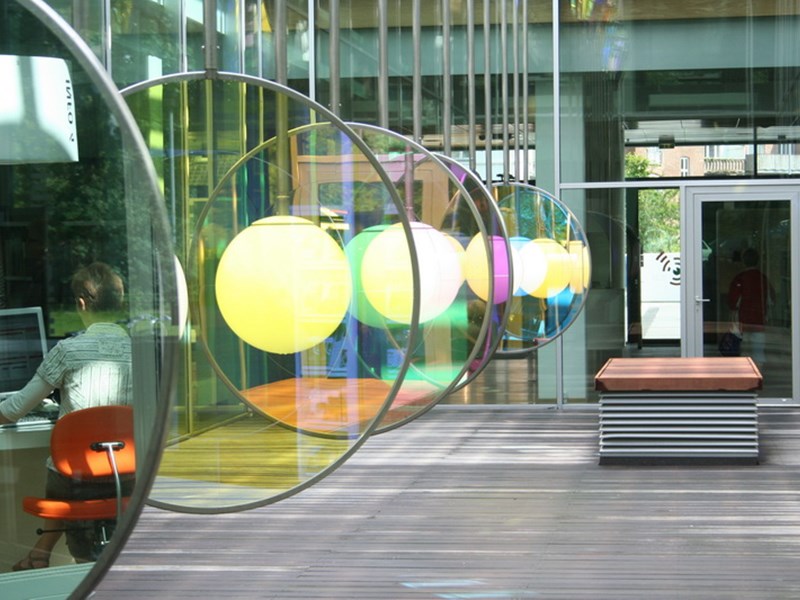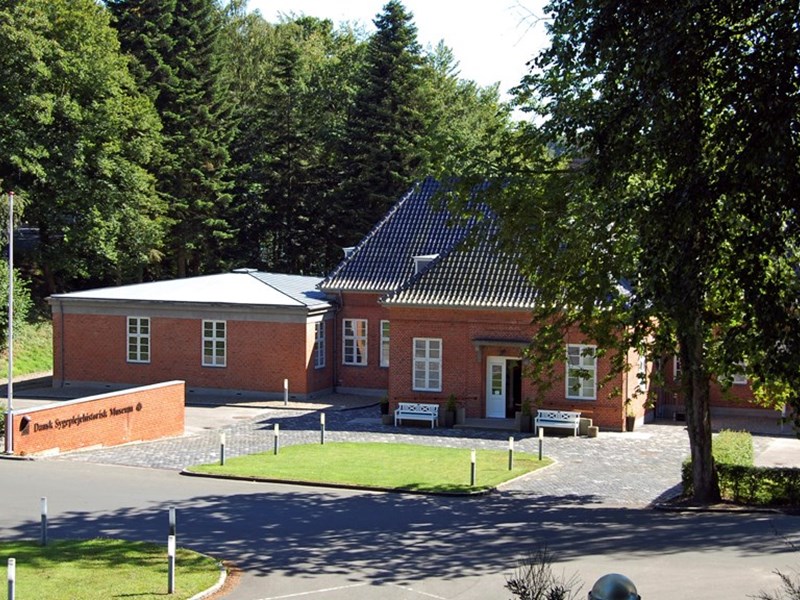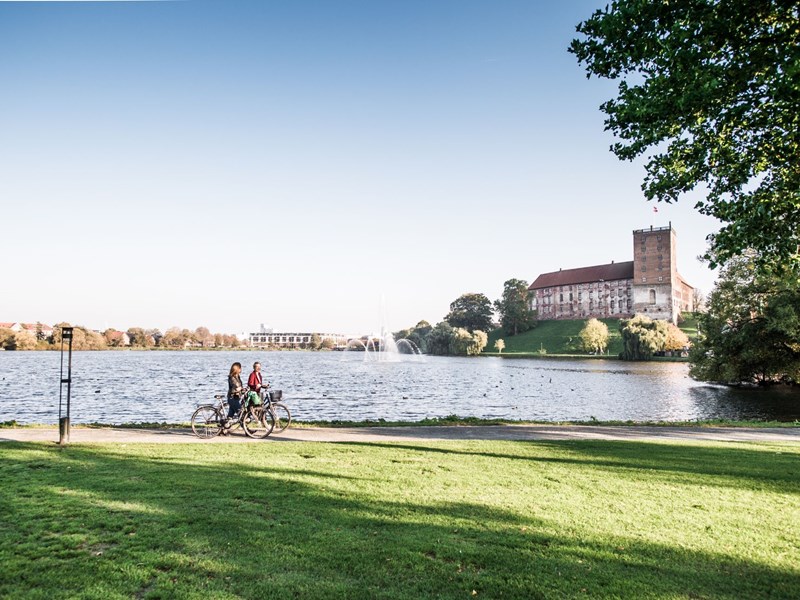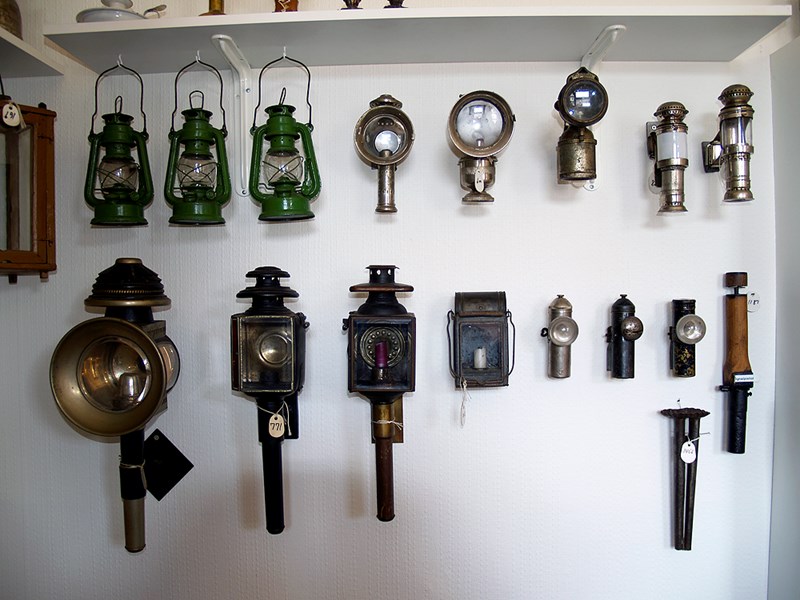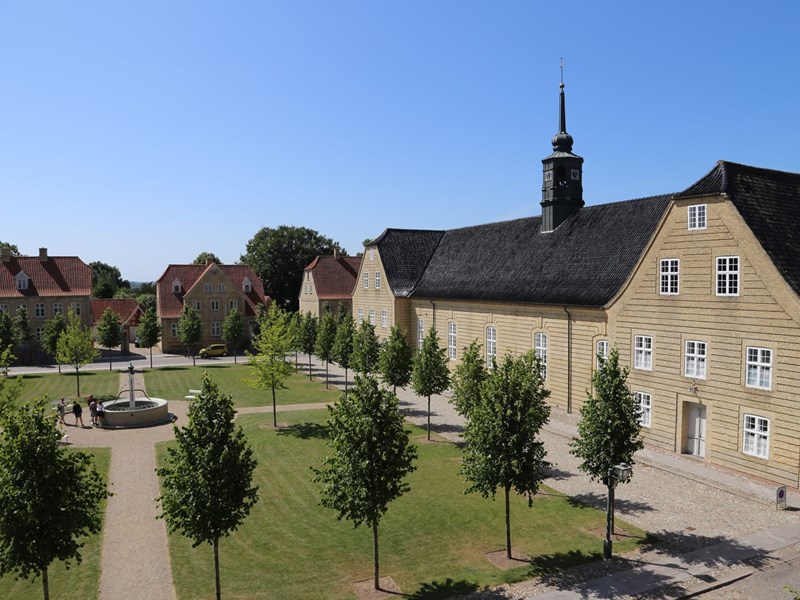Christiansfeld
Visit one of the seven wonders of Denmark when visiting Kolding. If you are interested in history and iconic buildings, you will for sure find Christiansfeld interesting.
In this well-preserved society, which the Moravian Brethren build in 1773, you will find the iconic yellow-brick houses side by side. The Moravian Brethren is not only known in Denmark but all over the world. Therefore, it is possible to find societies build like Christiansfeld in other places than the southern part of Denmark.
You could go exploring the fine cobbled streets, while you enjoy one of the famous honey cakes and a lovely cup of coffee.
Christiansfeld is a special place and is a recommended place to visit. Below we have listed a couple of ideas for you, to plan your visit Christiansfeld and a morsel of the exciting history.
Christiansfeld - a part of UNESCO world heritage
Christiansfeld is inscribed on the UNESCO world heritage list, which means that the city has been declared preservation-worthy under the international world heritage program. The purpose of the program is to designate and protect places, that have unique importance. The city has been added to the list on July 4, 2015, and has in this connection been marked as a very important place.
Christiansfeld is on the list, due to the still existing Moravian Brethren, which is evidence of a unique cultural tradition and history. It is an evangelical independent congregation, and in the city, you will find the only Moravian Brethren church located in Denmark. You can experience a church service every Sunday, and everybody is more than welcome. The church is special in its simple, white appearance, and on its own, it is definitely worth a visit.
What makes the city special is the structure with the church placed in the center and two parallel main streets on each side. The coherent structure is due to the period (1773 - 1812) the city was built in. The city was built from a German model used by the Moravian Brethren to build all their cities.
The architecture of the houses is similar and simple with a single- and two-story building with yellow bricks and red roofing tiles. The city has an open plan which contains important and large buildings, which is used in everyday life and welfare. The Moravian Brethren’s democratic and humanistic view of humanity reflects in the way the city is organized.
Go to sønderjysk kaffebord in Christiansfeld
You cannot visit South Jutland without going to sønderjysk kaffebord, which consists of various types of cakes, served on a table with coffee. The old tradition dates back to the nineteenth century, where it became popular among Southern Jutlanders. When South Jutland came under German rule after 1864, the German authorities would not grant village halls or inns a license to sell spirits. The Danes were not satisfied with the German rule, nor the lack of alcohol, which is why they gathered in the Danish village halls to sing Danish songs and hold meetings. When they could not get their coffee laced with spirits, the Danes had to find a replacement, and that is where the tradition of Sønderjysk kaffebord started.
Sønderjysk kaffebord consists of a variety of cakes - both dry, soft, and hard cakes naturally served with coffee. If it is a traditional sønderjysk kaffebord it consists of at least 21 different cakes, where 7 of them are dry, 7 of them are soft and 7 of them of hard cakes.
You do need to go elsewhere in South Jutland to experience the tradition of sønderjysk kaffebord, since it, unfortunately, is not served in Christiansfeld. However, you may be lucky to experience it around Christmastime and other holidays.
Still, it is easy to find other delicious cake options in Christiansfeld. There is in fact a very special cake, that the city is known for.
Christiansfeld’s gingerbread bakery
Christiansfeld is often referred to as the gingerbread city or the city of hearts because of the city’s gingerbread hearts. Through 200 years gingerbread has been baked in the city and shipped around the country. In 1783 baker Christian Rasch opened a bakery, which after a few years was taken over by the wigmaker Immanuel Martin Achtnicht. Even though he was a wigmaker, he had knowledge of baking and his wife had an outstanding recipe for gingerbread, which was put into production. After taking over the bakery, they moved to Lindegade 36, where the gingerbread bakery still remains today, just under the name Xocolatl - Brødremenighedens Honningkagebageri. Additionally, the contemporary bakery Tyrstrup Brød bakes gingerbread in Christiansfeld.
There are many different recipes for gingerbread in the city, and people have a difficult time agreeing on, which one is the best. One suggestion for you is to take your time to taste all of them when you explore Christiansfeld and come up with your own personal evaluation. One thing is for sure - you cannot visit the city without tasting a gingerbread.
Kolding Hotel Apartments
Experience history in Kolding






